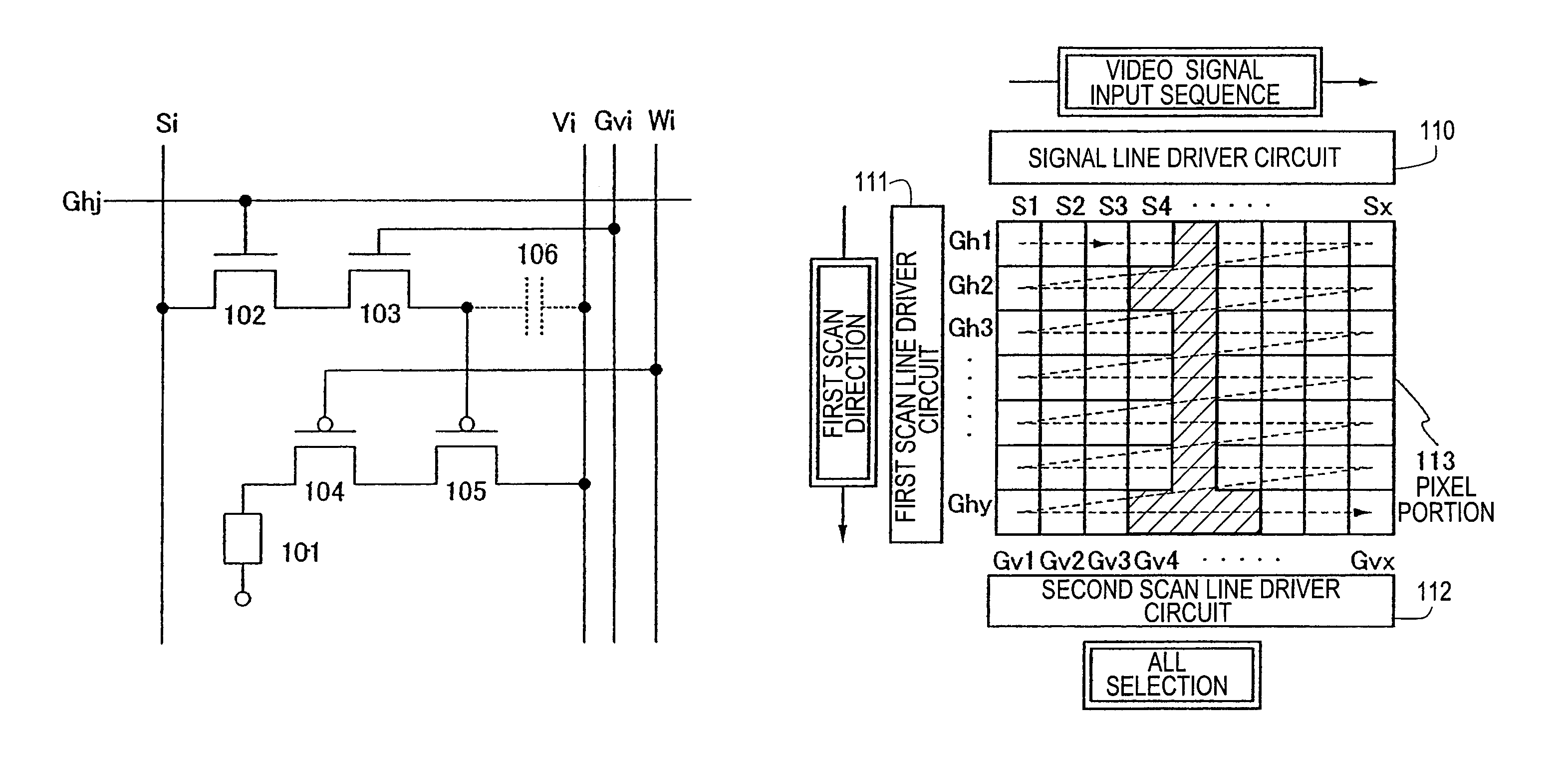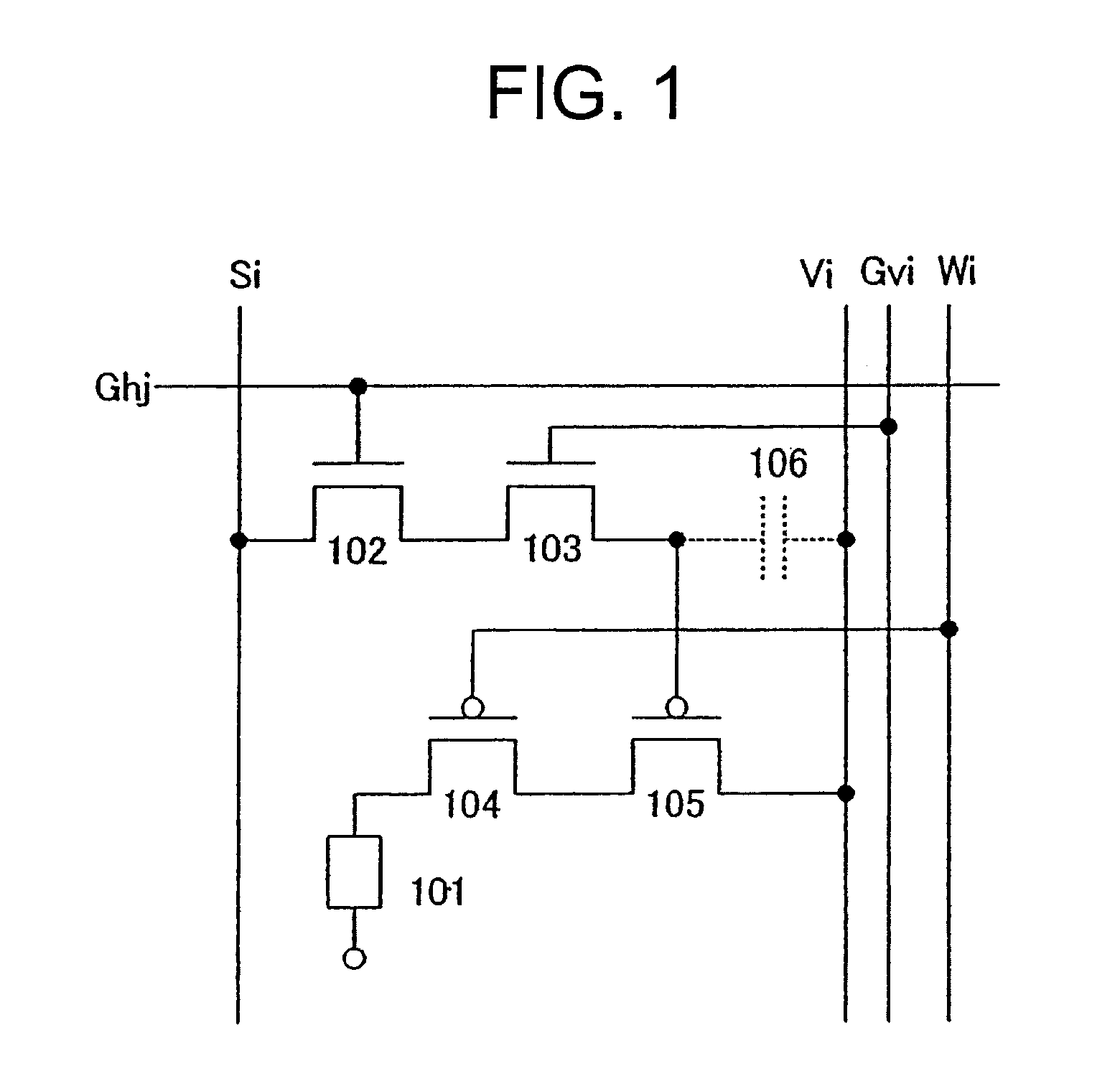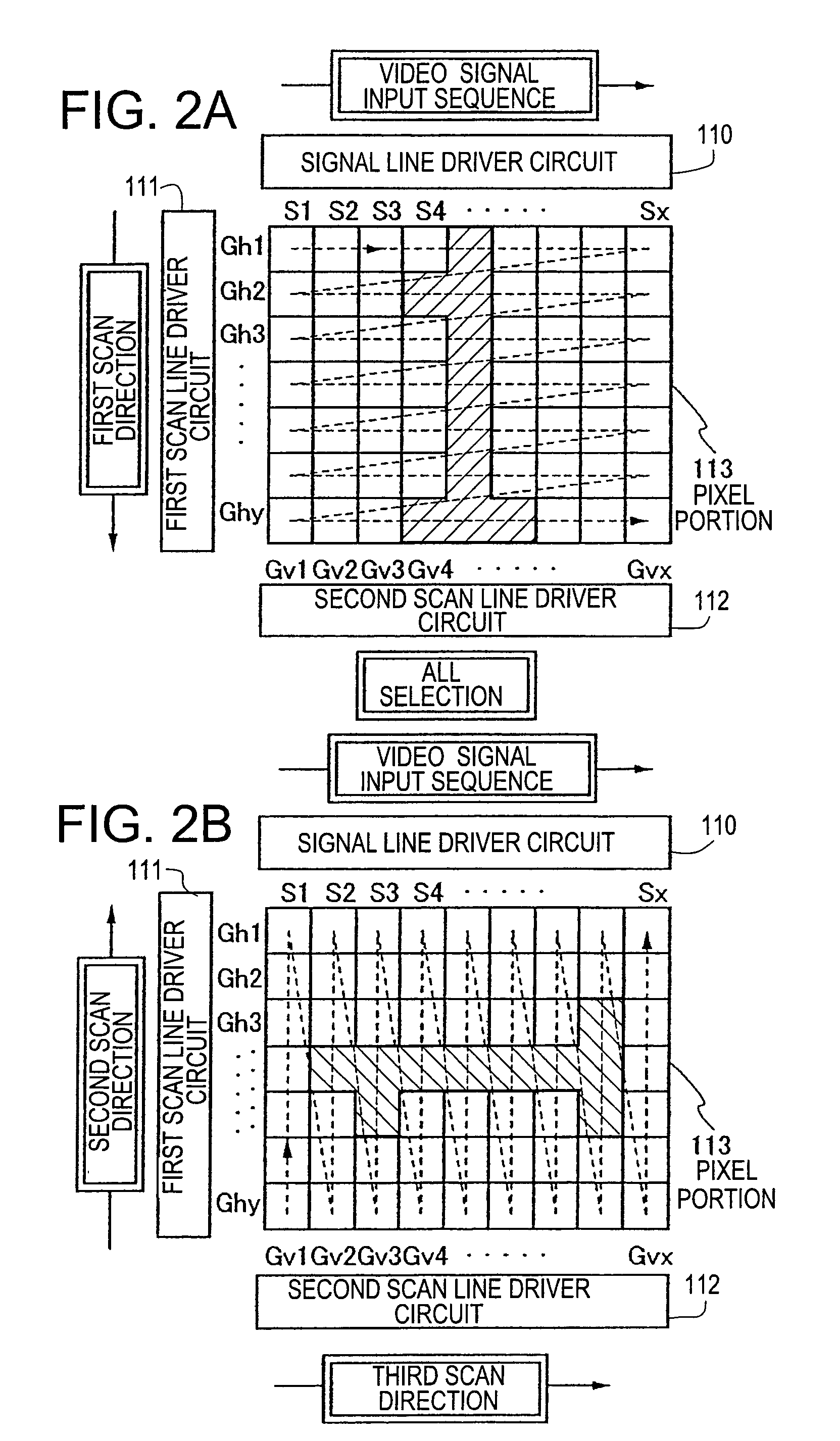Method for driving light-emitting device
a technology of light-emitting devices and light-emitting elements, which is applied in the direction of static indicating devices, identification means, instruments, etc., can solve the problems of reducing the luminance of light-emitting elements, affecting the operation of light-emitting devices, so as to reduce the size and weight of light-emitting devices, and double the area displaying images
- Summary
- Abstract
- Description
- Claims
- Application Information
AI Technical Summary
Benefits of technology
Problems solved by technology
Method used
Image
Examples
embodiment mode 1
[0040]First, a configuration of a pixel included in the light emitting device of the invention will be described with reference to FIG. 1.
[0041]FIG. 1 shows an example of a pixel included in the light emitting device of the invention. The pixel shown in FIG. 1 comprises a light emitting element 101, two transistors (a first switching transistor 102 and a second switching transistor 103) used as switching elements for controlling a video signal input to the pixel, a driving transistor 104 for controlling a current value supplied to the light emitting element 101, and a current controlling transistor 105 for selecting whether a current is supplied to the light emitting element 101 or not. The pixel may also comprise a capacitor 106 for holding a video signal potential as shown in this embodiment mode.
[0042]The first switching transistor 102 and the second switching transistor 103 may have either the same conductivity or different conductivities. Although both the two switching transis...
embodiment mode 2
[0070]Explained in this embodiment mode is a structure of the light emitting device of the invention in which light is emitted from each side of a light emitting element.
[0071]In the case of a dual emission display device, an image is inverted to be displayed on each screen. Therefore, when switching a display screen, it is necessary to change an input sequence of a video signal from a signal line driver circuit to a signal line and a scan direction of a second scan line driver circuit as well as to change an image direction vertically to horizontally.
[0072]First, an operation for inverting the image shown in FIG. 2A left to right is explained with reference to FIG. 3A. In this case, the second scan lines Gv1 to Gvx are selected all at once as in FIG. 2A and the first scan lines Gh1 to Ghy are scanned in the same sequence as in FIG. 2A. In FIG. 3A, however, a video signal input from the signal line driver circuit 110 to the signal lines S1 to Sx is performed in the reverse order fro...
embodiment mode 3
[0080]Described in this embodiment mode is a configuration of the pixel shown in FIG. 1, which is added with a function for stopping light emission of a light emitting element independently on a video signal.
[0081]FIG. 5 shows an example of a pixel included in the light emitting device of the invention. The pixel shown in FIG. 5 comprises a light emitting element 401, two switching transistors 402 and 403 used as switching elements controlling a video signal input to the pixel, a driving transistor 404 for controlling a current value supplied to the light emitting element 401, a current controlling transistor 405 for selecting whether a current is supplied to the light emitting element 401 or not, and two erasing transistors 407 and 408 for stopping light emission of the light emitting element 401. The pixel may also comprise a capacitor 406 for holding a video signal potential as shown in this embodiment mode.
[0082]As in the pixel shown in FIG. 1, the first switching transistor 402...
PUM
| Property | Measurement | Unit |
|---|---|---|
| temperature | aaaaa | aaaaa |
| radius of curvature | aaaaa | aaaaa |
| size | aaaaa | aaaaa |
Abstract
Description
Claims
Application Information
 Login to View More
Login to View More - R&D
- Intellectual Property
- Life Sciences
- Materials
- Tech Scout
- Unparalleled Data Quality
- Higher Quality Content
- 60% Fewer Hallucinations
Browse by: Latest US Patents, China's latest patents, Technical Efficacy Thesaurus, Application Domain, Technology Topic, Popular Technical Reports.
© 2025 PatSnap. All rights reserved.Legal|Privacy policy|Modern Slavery Act Transparency Statement|Sitemap|About US| Contact US: help@patsnap.com



